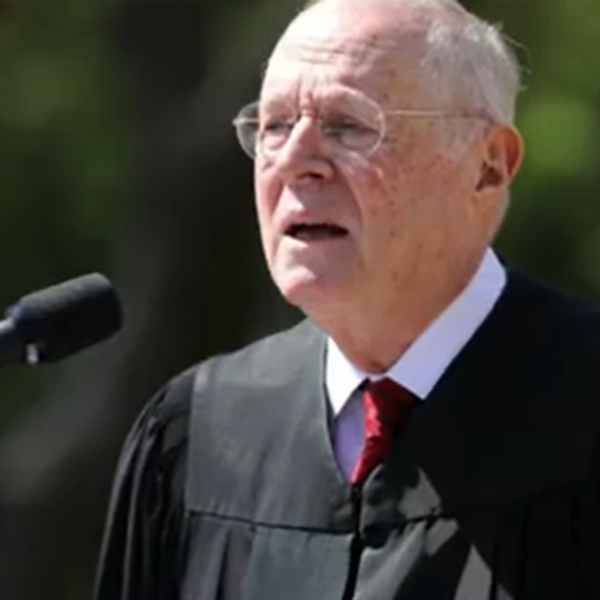Republican Candidates Are Advertising On White Nationalist Platform Gab
As if the radicalization of the Republican Party weren’t already clearly enough established, a number of GOP candidates—notably, ex-football star Herschel Walker, the nominee in the race against incumbent Democrat Raphael Warnock for Georgia’s U.S. Senate seat—have begun advertising on the white-nationalist-friendly platform Gab.
The list also includes some less surprising names, such as Republicans’ go-to white nationalist in the House, Paul Gosar of Arizona, and the QAnon-loving keynote speaker for the white-nationalist “America First” conference earlier this year, Marjorie Taylor Greene of Georgia.
As Alex Kaplan reports at Media Matters, Gab last August introduced a new feature enabling people to advertise on the site. Founder Andrew Torba called it “a huge step forward for our vision of a parallel economy” comprising clients who have been removed from other platforms for terms-of-use violations.
Walker has been among the more prolific advertisers. One ad, saying “we need your support today,” depicts Warnock as “celebrity funded” and “celebrity approved,” while another shows a lineup of liberal celebrities who have donated to Warnock’s campaign and asking, “Georgia Values? Or Hollywood Values?,” adding: “I need your help to WIN.”
Other “Team Walker” ads on Gab claim “the race is in a dead heat,” claim that “the Liberal Media is out to get me,” and “the road to defeating the Biden Agenda runs right through Georgia.”
As The Informant’s Nick Martin notes, it’s not clear whether Walker himself has an account at Gab. One unverified page with 7,000 followers uses his name and photo, but it has only posted there once—three days after the Jan. 6 insurrection, when its owner wrote: "Hey everyone. Coming on over to Gab after the sad news about Parler."
Among the other Republican candidates advertising on Gab has been Jerrod Sussler of Washington state’s 4th Congressional District, who is seeking to unseat incumbent Republican Congressman Dan Newhouse, who was targeted for primary defeat by Donald Trump after he voted for Trump’s impeachment in January 2021.
Gosar, who also delivered a taped speech at the white-nationalist America First convention in February, asked “every America First Patriot” to chip in to defend his reelection bid. He has previously praised Gab as comprising “people who respect real diversity, diversity of opinion, thoughts, and views.”
Greene’s ads on Gab have featured her aiming a .50-caliber sniper rifle (“Enter to win MTG’s gun!”) and posing with former Trump adviser Sebastian Gorka with an “Impeach Biden” sign. “Joe Biden must be impeached,” the text reads. “Not tomorrow. Not next week. Not next year. NOW … before it is too late!”
Gab established itself in 2016 as a friendly environment for right-wing extremists. “When a group of people are being systematically dehumanized and labeled as the alphabet soup of phobias,” Torba wrote, “they will look for a place that will allow them to speak freely without censorship and devoid of Social Justice bullying.”
The reality is that the site has been a free-for-all of bigotry, conspiracism, and violent rhetoric. Posts with headlines like “Satanic PizzaGate Is Going Viral Worldwide (Elites Are Terrified)” are standard fare. Antisemitism flourishes in the comments, where a mere downvote can get users accused of being a “#Jew.”
Pittsburgh mass shooter Robert Bowers was a regular Gab user, and posted his final threat (“Screw your optics. I’m going in”) to the site before embarking on his 2018 rampage inside a synagogue that left 11 people dead. Gab was largely deplatformed in the aftermath of that incident, but eventually found a hosting service with the Northwest-based Epik, which also hosts Alex Jones’ Infowars operation.
Torba’s own anti-Semitism is well established. Speaking at the February America First gathering, he told the audience he “rebukes the Synagogue of Satan.” He also called for “a parallel Christian society,” because “we are fed up with the Judeo-Bolshevik one.”
When criticized, Torba responded: “Sadly many Christians today are so afraid of being called a silly meaningless name by the world (bigot, antisemite, homophobe) that they refuse to even remotely share or discuss the Gospel in their daily lives, let alone live it,” adding: “You reveal your anti-Christian hatred when you refer to Biblical Truth as ‘antisemitism.’”
After its post-Pittsburgh downturn, Gab has worked to reestablish itself among far-right activists; in 2019, it was able to return to financial stability thanks to an online crowdfunding strategy. After the Jan. 6 insurrection—particularly the demise of Parler, which had become an effective competitor for the same audience—it once again became a popular place for extremists to gather and share their violent seditionist worldviews.
Media Matters noted that Gab also introduced targeted advertising recently. That means that there may be other Republican candidates buying ads on the platform whose activity is not immediately visible.
Reprinted with permission from Daily Kos.












